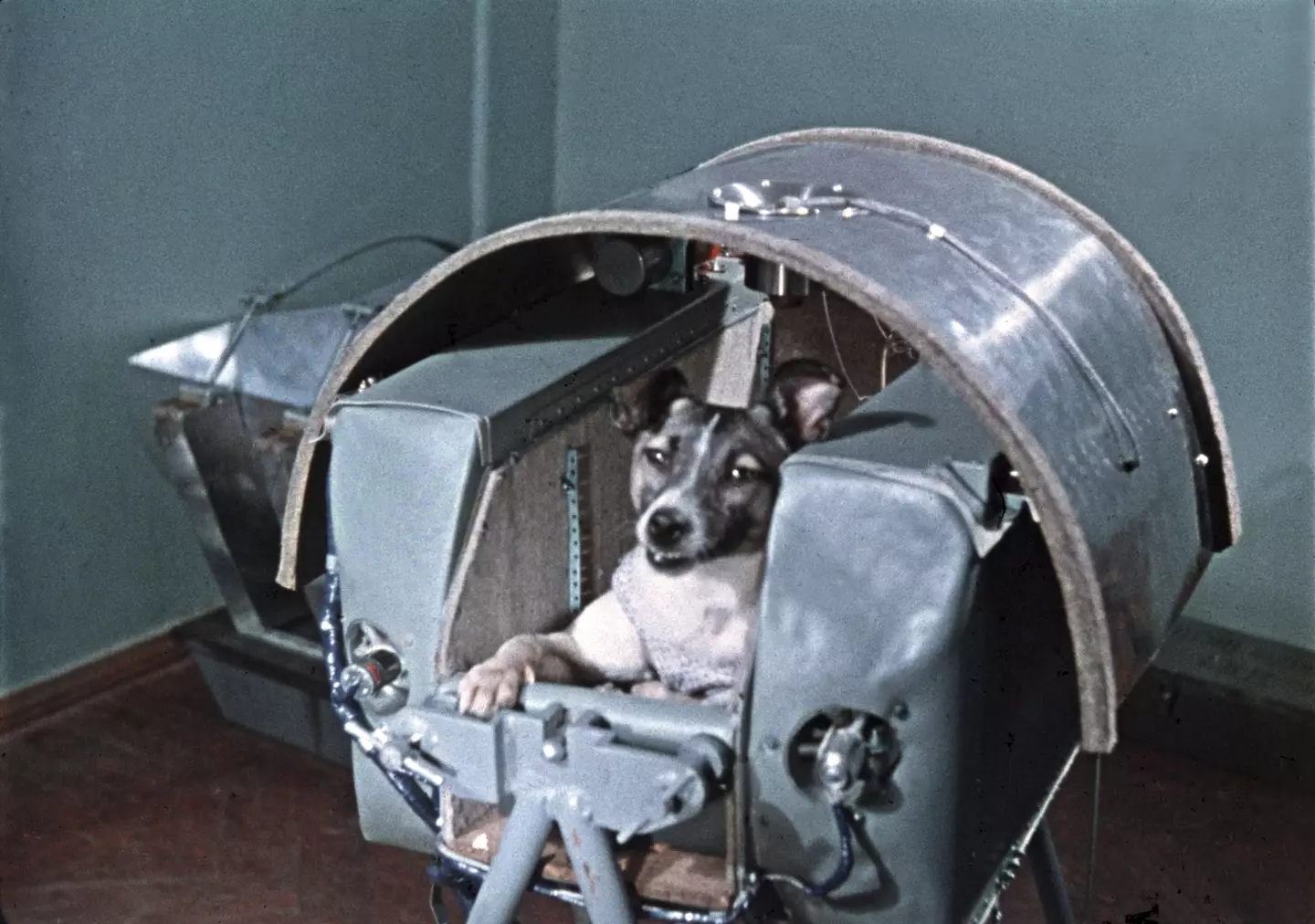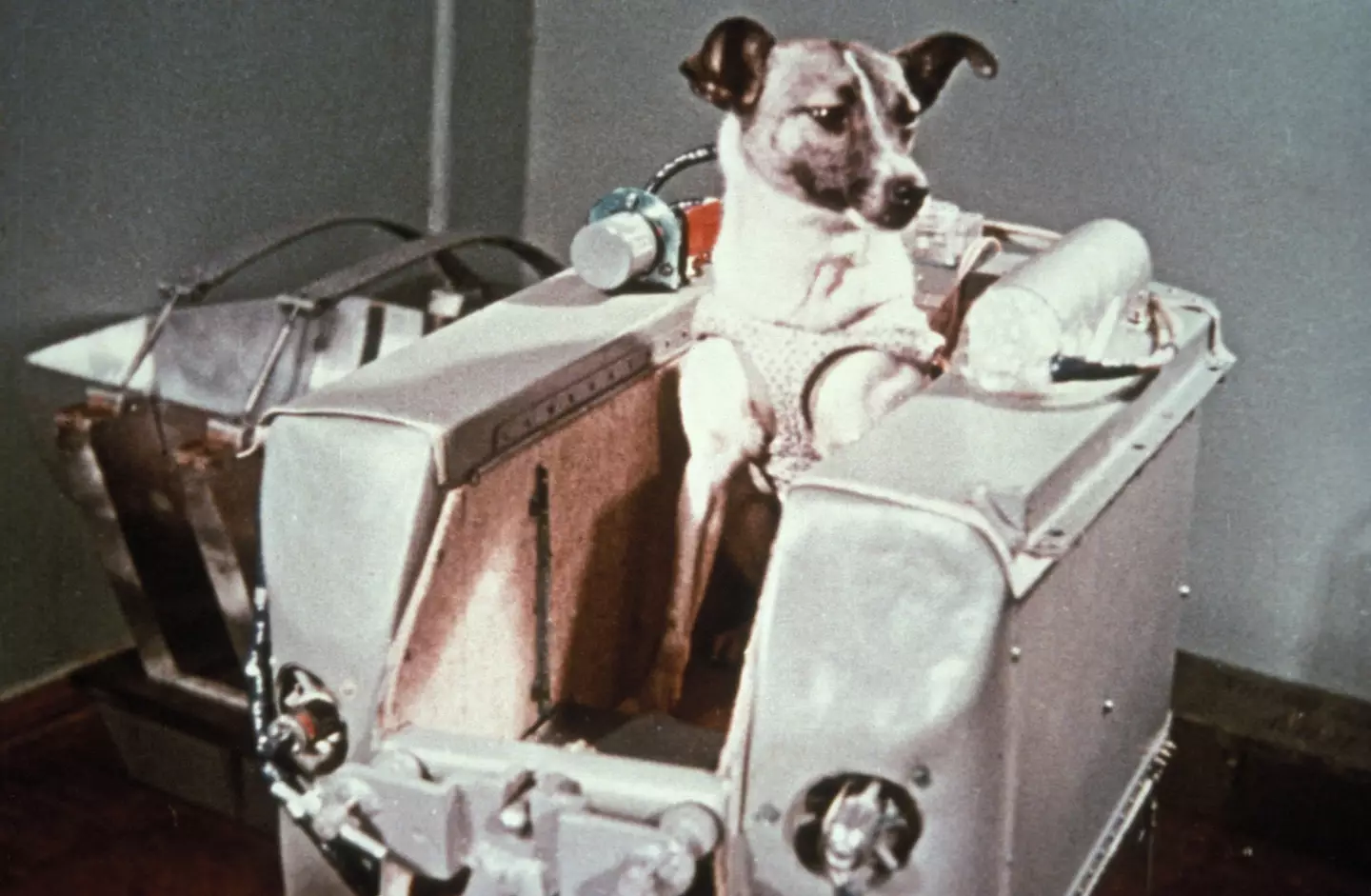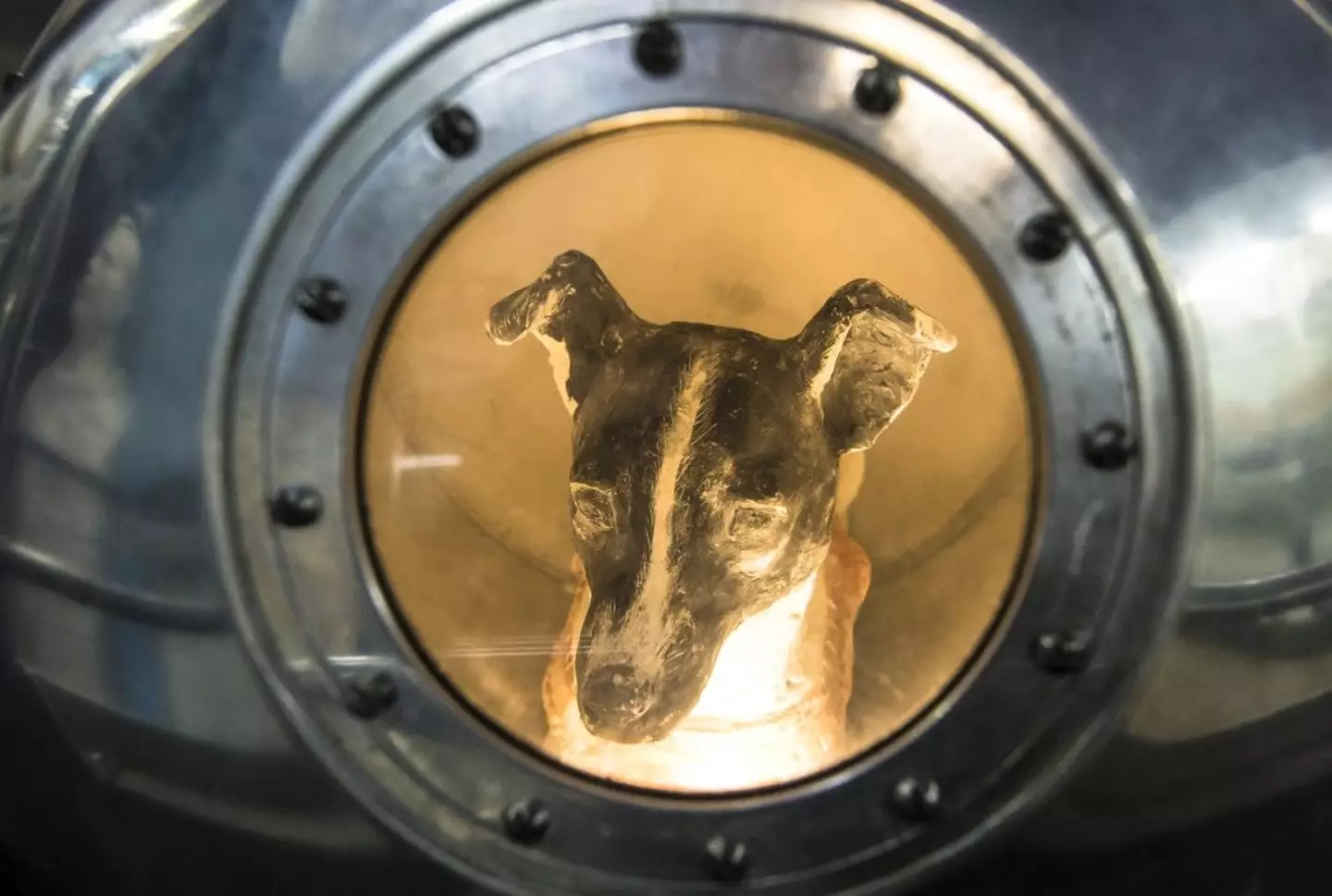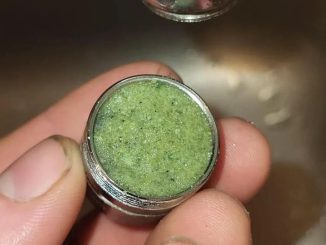When we think of the space race, names like Neil Armstrong and Yuri Gagarin often come to mind. But hidden among these monumental achievements is a deeply emotional and often overlooked story—the tale of Laika, the first living being to orbit Earth. While Laika’s mission marked a groundbreaking moment in human history, it came at a devastating cost. Her journey is a testament to both the ambition and the ethical dilemmas of early space exploration.
Laika: A Stray Dog Chosen for History

Laika was a stray dog who had lived on the streets of Moscow (Sovfoto/Universal Images Group via Getty Images)
In the mid-20th century, the Cold War fueled an intense rivalry between the United States and the Soviet Union. Both nations sought to outpace each other in the space race, leading to rapid advancements in technology and ambitious goals. After the successful launch of Sputnik 1 in October 1957, Soviet leader Nikita Khrushchev demanded another groundbreaking achievement to coincide with the 40th anniversary of the October Revolution.
The Soviet scientists proposed a bold idea: sending a living creature into space. At a time when no human had yet ventured beyond Earth, using animals to understand the effects of space travel on living beings seemed like a necessary step.
Laika, a three-year-old stray dog wandering the streets of Moscow, was selected for this historic mission. Her name, which translates roughly to “bark” in Russian, reflected her humble origins. She was a mixed-breed, part Samoyed and part terrier, chosen for her calm demeanor and resilience.
Training for the Unknown
Laika’s journey to space required extensive preparation. Soviet scientists subjected her to rigorous training to simulate the conditions of spaceflight.
The Training Regimen
- Diet Adjustments: Laika was introduced to a special diet of jellied food, designed to sustain her in zero-gravity conditions.
- Centrifugal Tests: To mimic the intense forces of launch, she was spun in centrifuges to acclimate her to rapid gravitational changes.
- Cramped Conditions: Laika was trained to endure confinement in small spaces, as the spacecraft offered very limited room for movement.
Despite her grim fate, Laika displayed remarkable adaptability throughout the training process, capturing the hearts of the scientists who worked with her.
The Launch of Sputnik 2
On November 3, 1957, Laika’s historic journey began with the launch of Sputnik 2. The mission was an international sensation, with newspapers around the world celebrating the Soviet achievement. Laika became an overnight celebrity, symbolizing both scientific progress and the sacrifices made in the name of exploration.
However, beneath the celebratory headlines lay a somber truth: there were no plans for Laika to return to Earth alive.

The dog would die from panic and overheating onboard the spacecraft (Sovfoto/Universal Images Group via Getty Images)
The Tragic Reality of Laika’s Death
At the time, Soviet officials claimed Laika had survived for six to seven days before being euthanized to prevent her from suffering when the spacecraft’s oxygen supply ran out. However, in 2002, Russian scientist Dimitri Malashenkov revealed the harrowing truth.
The True Cause of Death
Laika’s journey ended just five to seven hours after launch. Data from her heart monitor indicated she had experienced extreme stress and panic. She ultimately died from overheating, a result of multiple failures in the spacecraft’s thermal control system.
NASA later supported this conclusion, noting that insulation had likely torn during launch, causing the temperature inside Sputnik 2 to rise uncontrollably.
Laika’s remains, along with the spacecraft, burned up upon re-entry into Earth’s atmosphere on April 14, 1958.
Laika’s Legacy in Space Exploration
While Laika’s story is undeniably heartbreaking, her sacrifice paved the way for future space exploration. The data collected from her mission helped scientists understand the effects of space travel on living organisms, laying the groundwork for human spaceflight.
The Continuing Use of Animals in Space
Laika was not the last animal to be sent into space. The Soviets continued experimenting with dogs, eventually achieving success in 1960 with Belka and Strelka, who became the first living beings to orbit Earth and return safely. Their successful mission marked a turning point, demonstrating the feasibility of human spaceflight.
The Ethical Dilemma of Animal Testing in Space
Laika’s story raises important ethical questions about the use of animals in scientific research. While her mission was undeniably significant, it also highlighted the cost of progress.

A model of Laika in the Central House of Aviation and Cosmonautics in Moscow (MLADEN ANTONOV/AFP via Getty Images)
The Moral Debate
- For Progress: Proponents argue that such experiments were necessary for advancing space exploration, as human lives would have been at greater risk without prior animal testing.
- Against Cruelty: Critics contend that the conditions Laika endured were inhumane and that her death underscores the moral limits of scientific ambition.
In the decades since, advancements in technology and a shift in ethical standards have largely reduced the reliance on animals for space exploration.
Remembering Laika: A Symbol of Sacrifice
Today, Laika is remembered not just as a pioneer of space exploration, but as a symbol of the sacrifices made in the pursuit of scientific progress. Monuments and tributes around the world honor her legacy, including a bronze statue in Moscow featuring Laika atop a rocket.
Her story continues to resonate, serving as a reminder of both the achievements and the costs of humanity’s quest to explore the unknown.
Conclusion: Laika’s Unforgettable Journey
Laika’s journey into space was a monumental step in the history of exploration, but it came at a heartbreaking cost. As the first living being to orbit Earth, she became an unwitting hero, her sacrifice paving the way for human spaceflight and deeper understanding of the cosmos.
While her story remains a source of sorrow, it also serves as a testament to the resilience of life and the enduring impact of even the smallest creatures on the grand stage of history. Laika’s legacy reminds us to balance ambition with compassion as we continue to push the boundaries of what is possible.


